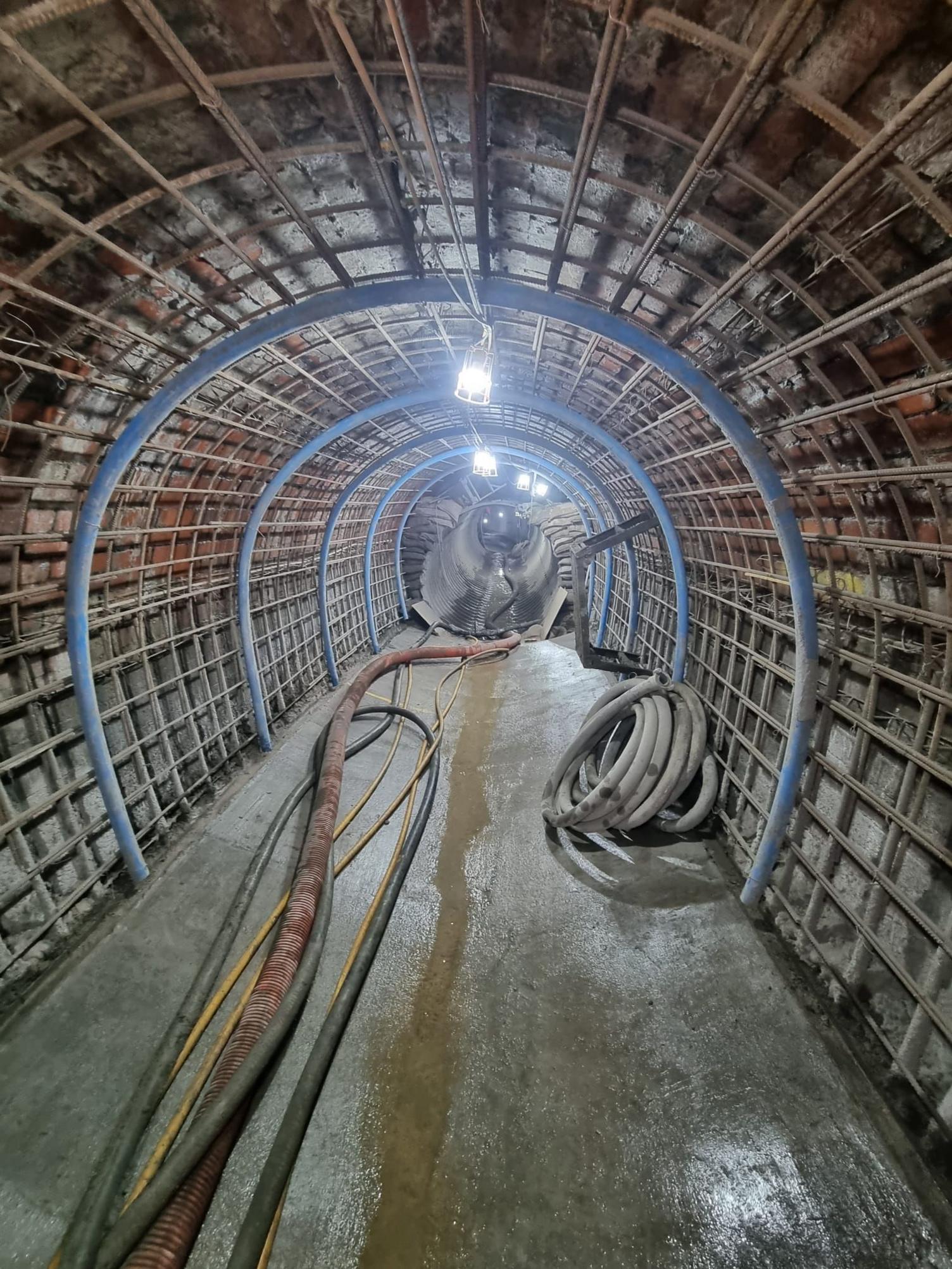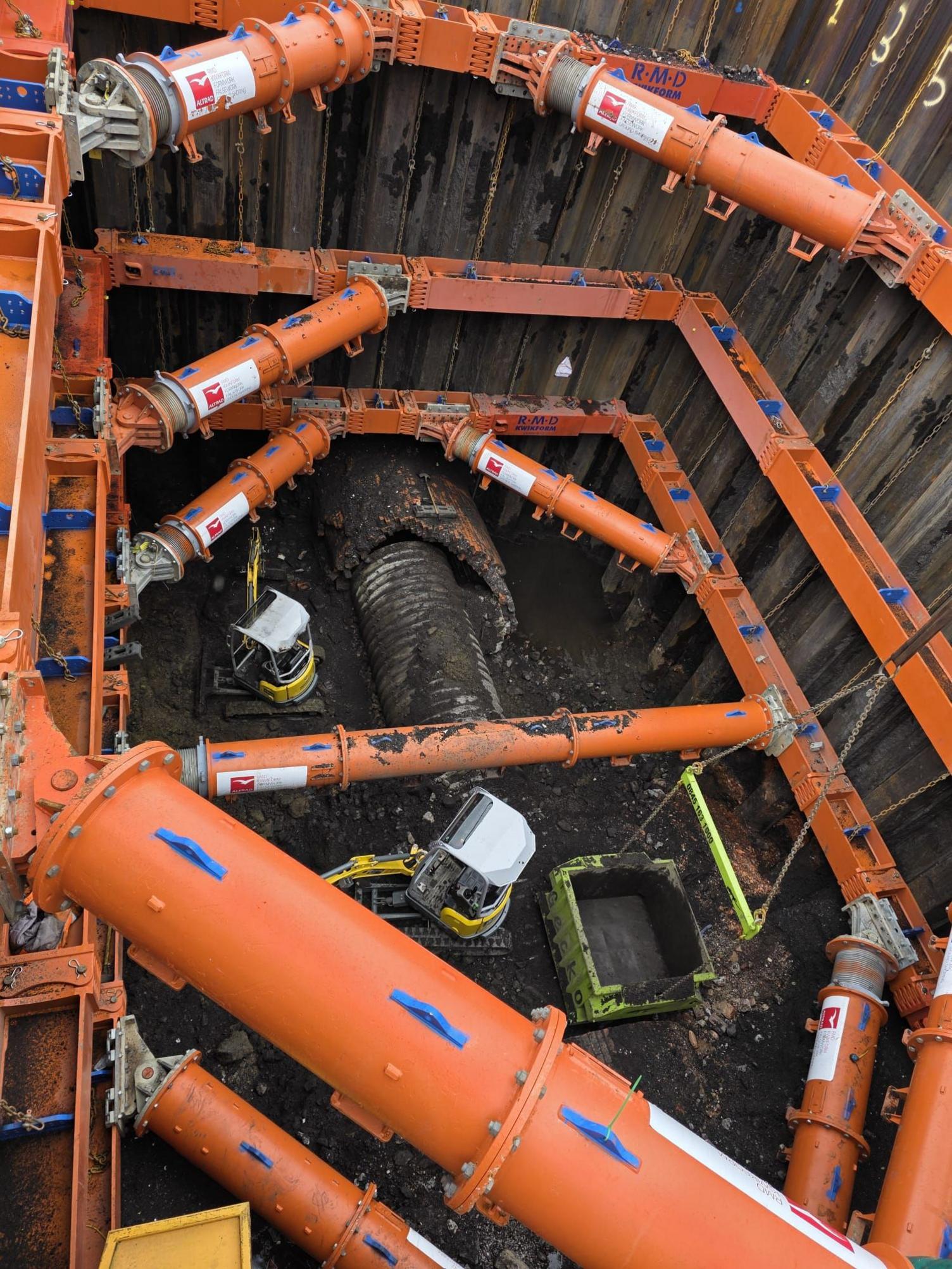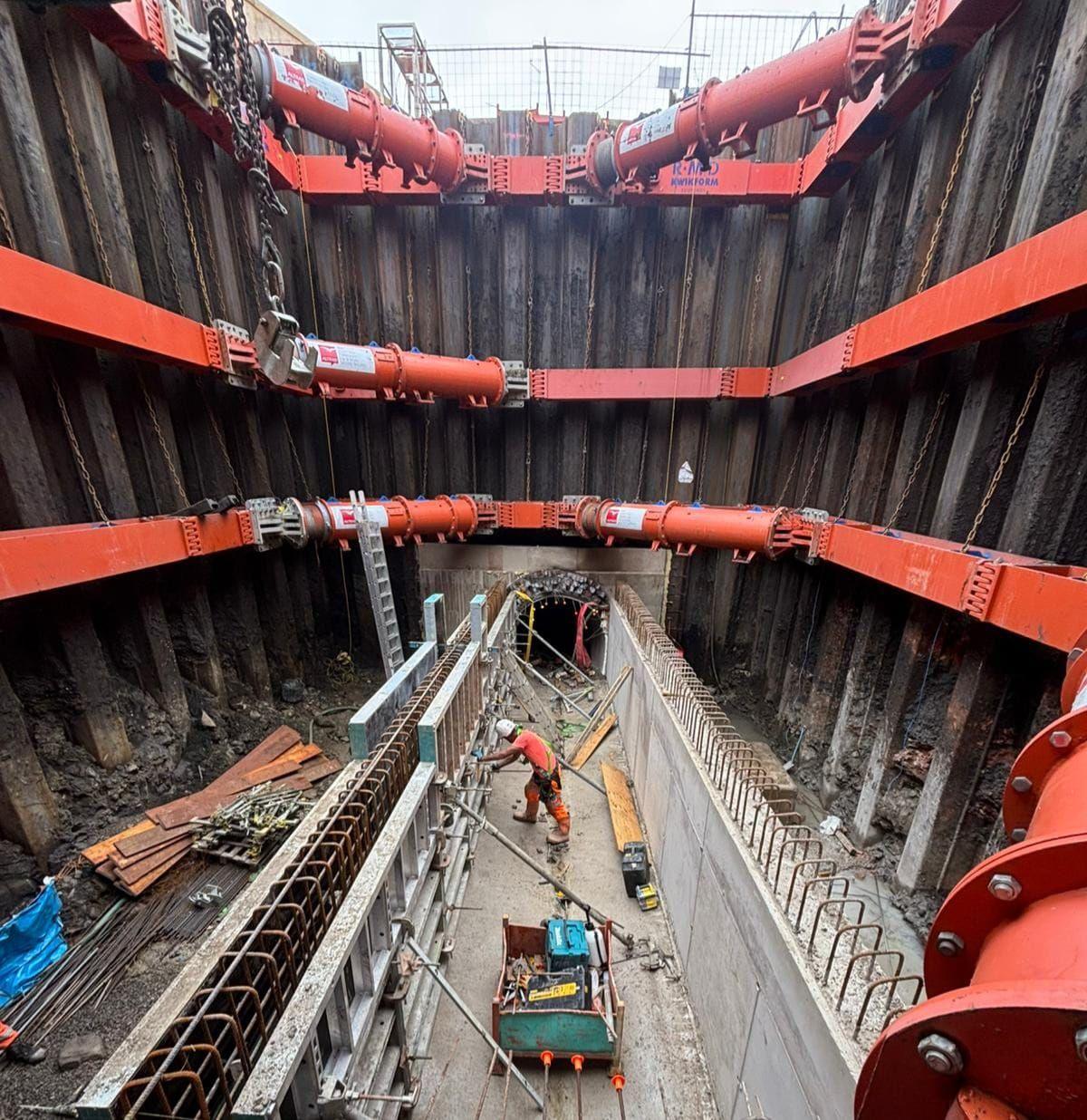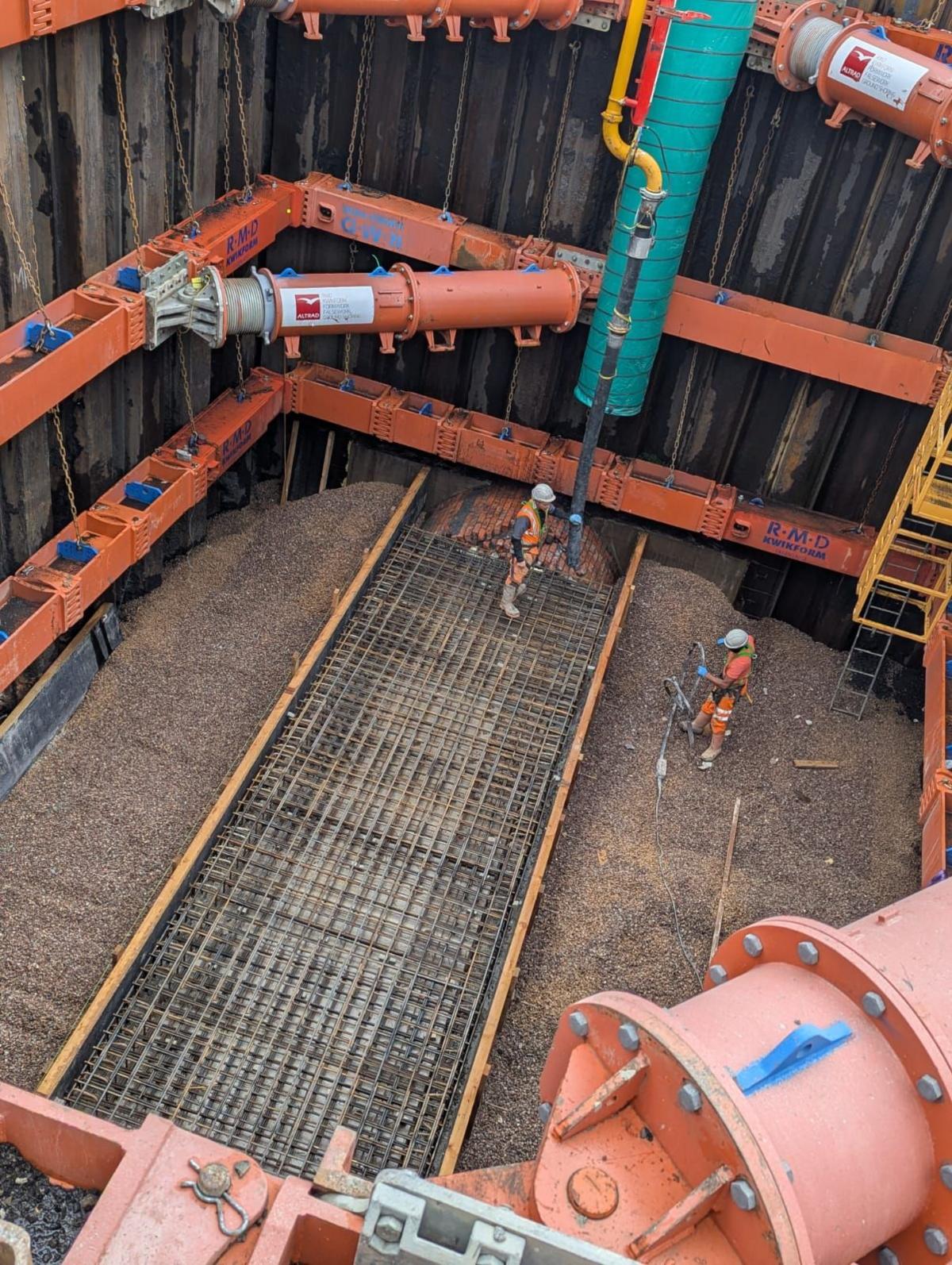The £4m job to fix a massive housing estate sinkhole
About 30 homes were evacuated last December when a 33ft (10m) wide and 45ft (14m) deep crater opened up
- Published
Work to fix a sinkhole described as the "biggest engineering job in south Wales" in 2025 is finally drawing to a close after nearly 12 months.
About 30 homes were evacuated in Merthyr Tydfil last year when a 33ft (10m) wide and 45ft (14m) deep crater opened up at the bottom of a driveway in Nant Morlais, Pant, on 1 December.
It emerged a week after Storm Bert and has cost more than £4m to repair.
Merthyr Tydfil council said it had been a "complex and technically demanding challenge" but due to the "commitment and dedication of the team undertaking this work, the progress made to date has been completed successfully".
What is a sinkhole and how are they formed?
- Published19 February
First residents back home after sinkhole nightmare
- Published11 December 2024
Love Island star 'left homeless' by sinkhole
- Published10 December 2024
Families had to be moved to hotels or stay with relatives as engineers and contractors initially filled the sinkhole with stone. Extensive temporary repair work allowed residents to move back in before Christmas last year.
Edwards Diving Services site manager Craig Howe said it was the "biggest engineering job in south Wales" this year.
"It's believed there was a landslide further up the valley which washed a load of debris through the tunnel during the storm which caused the collapse," Mr Howe explained.
He added that the culvert dated back to 1910 so was "showing its age".
The family of reality TV star Liam Reardon lived in the home most affected by the sinkhole.
Reardon, who won the 2021 season of Love Island with girlfriend Millie Court, described it as a "strange, unusual, crazy" experience, "like we were in a movie" at the time the hole emerged.
Mr Howe said: "Luckily, we managed to save the house and keep the other residents home.
"The gentleman who lives in the house next to the sink hole had taken the car off the drive two hours before the sinkhole appeared. He was very lucky."
- Image source, Edwards Diving Services

Image caption, Inside the 45ft (14m) deep sinkhole
1 of 5
More than 300 tonnes of concrete and 3,000 tonnes of stone has been used to fill the massive hole.
Project manager Jack Muldoon said it had been a complex operation.
"You make yourself a metal box inside the hole so it's safe to work and then we put bracing in and we used 15 tonnes of hydraulic bracing and that secured everything to make sure the pressure from the soil was supported.
"When this Victorian-era culvert was built it was all bricks and stone, now we have the beauty of steel and concrete which makes it easier for us.
"The stones have been brought to road level so residents can bring their cars in," he said.
He added that by next month Welsh Water will have reconnected the sewers.
Watch the moment part of a garden wall falls into the sinkhole as a man was being interviewed in front of it
What is a sinkhole?
A sinkhole is a depression in the surface because the underlying rock has collapsed.
They can be saucer-shaped or appear deeper more like shafts. If they occur in built-up areas they can appear more irregular as a road or another structure above can distort the shape.
How are they formed?
Sinkholes can appear for many different reasons - it is often due to the geology but human factors can also be a cause.
One of the most common reasons for a sinkhole is when rocks like limestone or chalk break down. This happens because carbon dioxide from the air dissolves in rainwater to form carbonic acid - this then percolates through the rock and reacts with it, causing it to dissolve.
Sometimes this process can happen gradually, where the depression becomes larger over time.
In other instances, the limestone sits below another layer of rock, which means that as it gets dissolved there are no immediate signs at the surface.
The overlying rock, sometimes clay or sandstone, will then suddenly collapse into the depression beneath - called a 'collapse sinkhole'.
These are most common in south Wales where sandstone rocks lie above caves in the limestone.
But human activities can also accelerate the formation of sinkholes or cause the ground to collapse in a similar way.
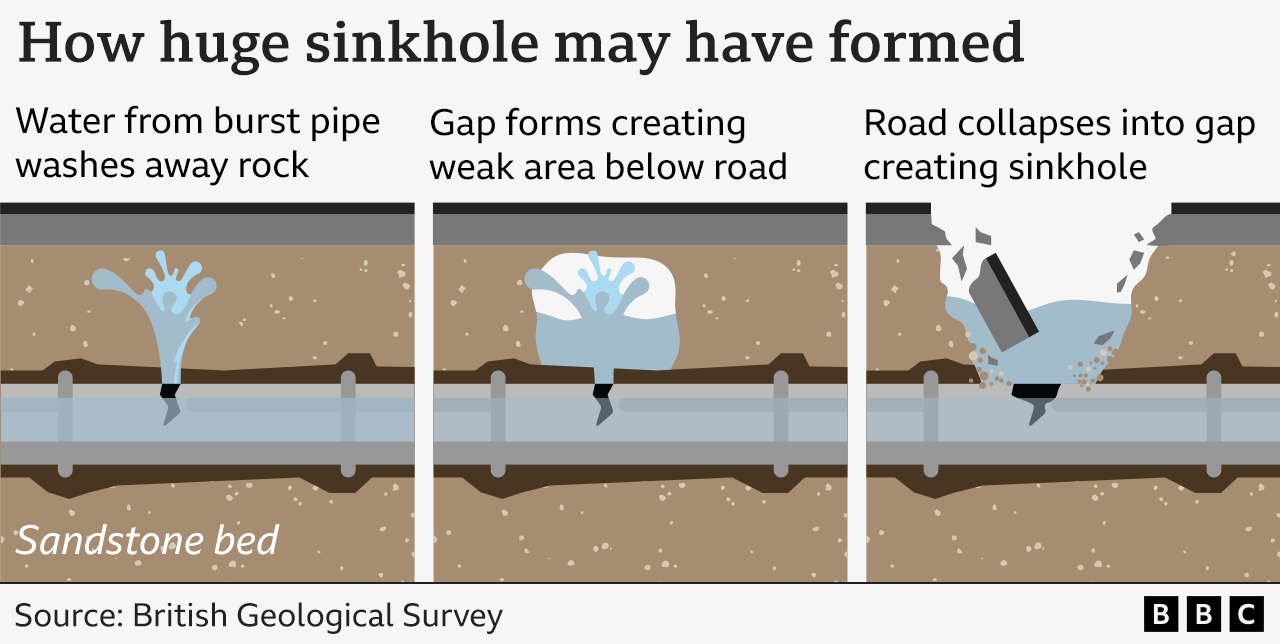
How common are sinkholes in the UK?
They are common in the UK because of the abundance of limestone and chalk rock and historic mining activities.
Limestone and chalk are formed from the deposit and compression of micro-organisms found in shallow warm seas. Millions of years ago the UK was located further south towards the equator and was much warmer with parts of the country submerged - creating the ideal conditions for these rock types to form.
Are they dangerous?
"Collapse sinkholes" which can appear suddenly and without any warnings at the surface, like cracks or subsidence, can be dangerous.
In the case of dissolution sinkholes geologists can indicate which areas are more at risk if the underlying rock is made up of chalk or limestone. For any new development in the UK the local planning authority does review the geology and any potential risks.
Sinkhole swallows driveway outside Merthyr Tydfil home
Sheilia and Meurig Price were among the residents who were forced to leave. They spent 10 days at their daughter's house after the hole emerged.
Mr Price explained how he woke up to the emergency services outside his house on the day the sinkhole appeared.
"Being nosey I came out to have a look and there were police cars, an ambulance and two fire engines outside.
"So, I thought something's really gone wrong and I walked round the back of our bungalow and saw this 14m chasm. It was huge."
He added that it was horrendous to think what could have happened.
"It's been challenging this year but it's coming to an end now and the workers on the site have worked well with residents."

Meurig Price says he is glad to see the work come to an end after nearly a year
A spokesperson for Merthyr Tydfil Council said: "The council has every confidence that the remainder of the work will be completed shortly, and we thank the residents for their continued patience and co-operation over the last few months.
"The work is on schedule to finish mid-November, with the cost totalling just over £4m."
More top stories
- Published14 October

- Published13 October

- Published14 October

